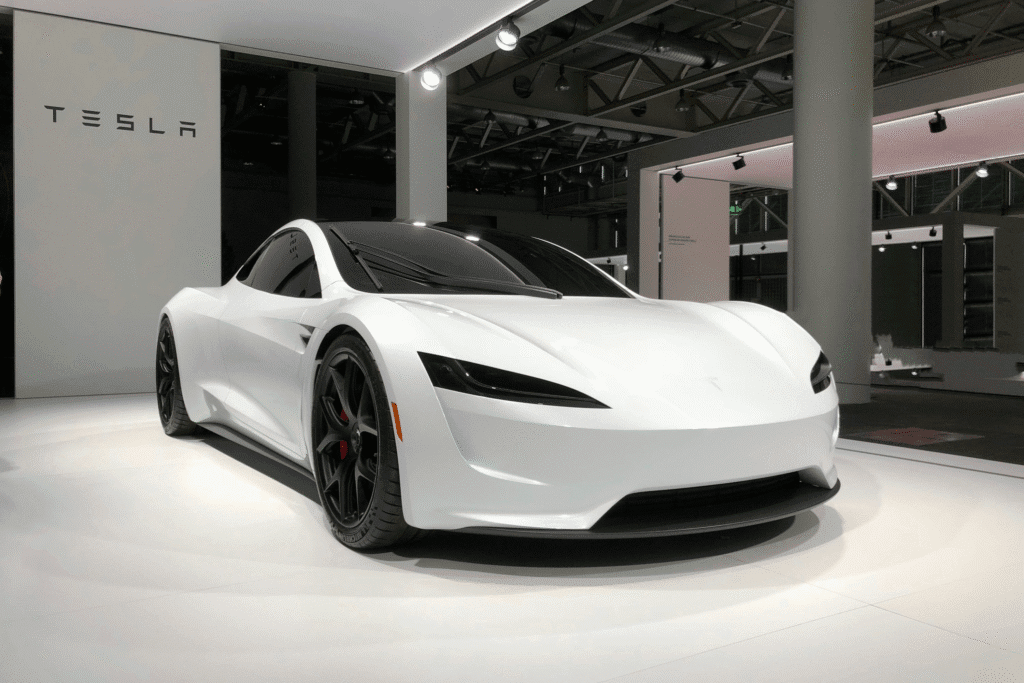In today’s world, driverless cars no longer feel like a distant dream. Two companies, Tesla and Waymo, are working hard to make robotaxis a reality. But while both have the same goal, their paths are very different. These differences will not only affect their companies but may also decide how the entire industry of self-driving taxis will grow in the coming years.
Tesla is moving very quickly. Just a month after launching a trial robotaxi service in Austin, Texas, in June 2025, CEO Elon Musk told investors that the company’s driverless taxis could be available to “half the population of the U.S.” by the end of this year. His words created excitement, but also a lot of pressure. People now expect Tesla to deliver something big in a very short time.
On the other hand, Waymo, which belongs to Google’s parent company Alphabet, has been working on robotaxis for more than eight years. It started its first test service in Phoenix, Arizona, long before Tesla entered the field. Today, Waymo’s taxis only operate in a few places, reaching about 3% of the U.S. population. This may sound small compared to Tesla’s promises, but Waymo’s approach is more about patience and safety than speed.
Elon Musk has always been known for his bold claims. He told investors that Tesla’s robotaxis would grow at a “hyper-exponential rate.” This means he believes the company can expand incredibly fast, far quicker than most people expect. The reason behind this confidence is Tesla’s technology. Tesla uses only cameras and artificial intelligence to guide its cars, skipping the detailed road mapping and extra sensors that other companies, like Waymo, rely on. Musk believes this makes Tesla’s system faster to build and easier to scale.

Waymo, however, does not share this belief. Its system is built on careful planning. Waymo uses many sensors, including radar and lidar, along with high-definition maps of the roads. This makes the cars more cautious and aware of their surroundings. The company also takes time to work with local communities and test cars for safety before moving into new areas. For Waymo, safety and trust are more important than quick expansion.
These two strategies show very different views of the future. Tesla sees speed and AI as the key. Waymo sees safety and rules as the foundation. Analysts believe whichever approach works better will have a huge impact. The market for driverless taxis is expected to be worth trillions of dollars in the next 15 years. The company that gets ahead early could become a leader for decades.
Tesla’s system is daring because it avoids mapping every road in detail. Instead, its artificial intelligence learns by watching the world through cameras, much like a human driver. This allows Tesla to put cars in new cities faster, without having to spend years building maps. However, this also means there is more risk if the AI makes mistakes. A single accident could harm trust in the technology.
Waymo’s method is slower, but it gives more control. Because its cars depend on both maps and sensors, they know every detail about their surroundings. This reduces the chances of sudden mistakes. Still, the cost and time needed to prepare each new city are very high. It is like building a careful path, step by step, while Tesla is running ahead on an open road.
The contrast also affects how people view both companies. Tesla is often seen as adventurous and willing to take risks. Its fans admire Musk’s boldness and believe in his vision of a future where robotaxis can serve millions. Waymo, in comparison, is seen as steady and responsible. It might not make as many headlines as Tesla, but it has built a reputation for safety. For many riders, this slow but sure method feels more trustworthy.
The future of robotaxis will not be shaped by just technology. Public opinion, government rules, and safety records will also matter. If Tesla succeeds in expanding fast without major issues, it could win a huge share of the market. But if safety problems appear, its speed may backfire. Waymo, meanwhile, could slowly gain ground as people learn to trust its careful approach.
Both companies are racing toward the same destination but are using very different maps. Tesla is betting that a bold leap into the future will pay off. Waymo is betting that patience and caution will win in the long run. Neither path is easy, and both have risks. The next few years will show which approach proves stronger.
For now, the world is watching closely. Will Tesla’s AI-only system truly allow it to expand to half the U.S. by the end of this year? Or will Waymo’s slow and steady method earn the trust of more communities first? These questions remain unanswered, but one thing is clear: the story of robotaxis is just beginning. The choices made today by Tesla and Waymo will shape not only their future but also how millions of people travel in the decades ahead.
As Elon Musk said, Tesla is aiming for growth at a “hyper-exponential rate.” Waymo, however, believes in step-by-step progress. Their visions are very different, but together they remind us that the road to the future has many paths. Which one will lead us there first? Only time will tell.


